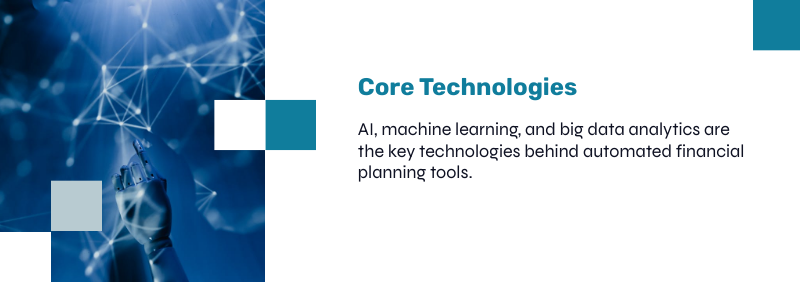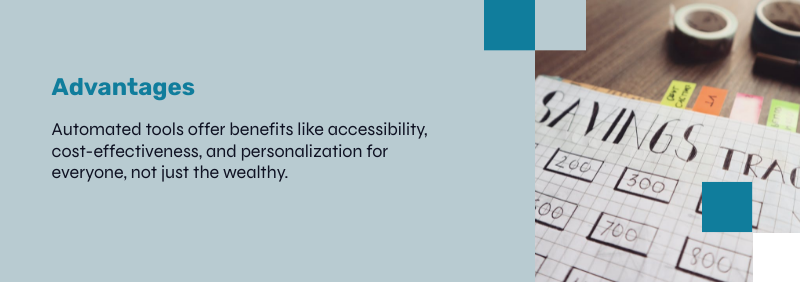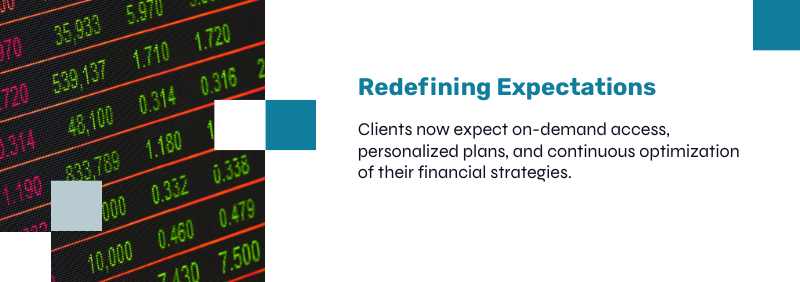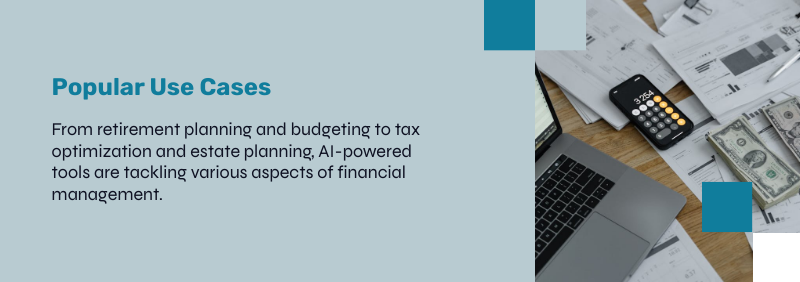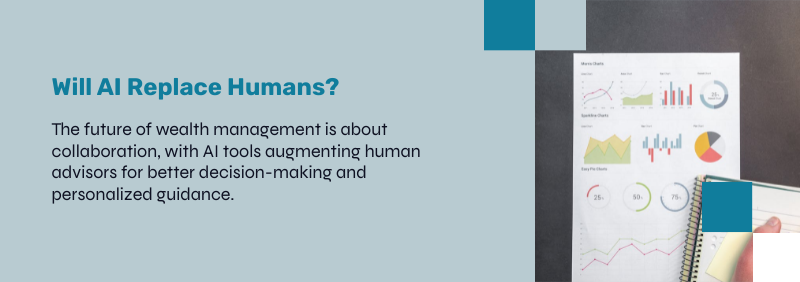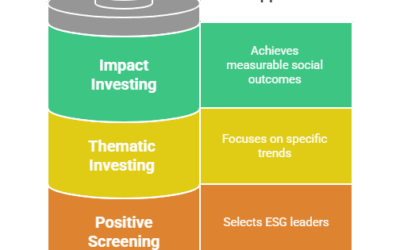Financial planning has traditionally been a human-centered service, reliant on the expertise of financial advisors crafting bespoke plans. However, the landscape is undergoing a seismic shift. Automated financial planning tools—powered by AI, machine learning, and big data analytics—are revolutionizing wealth management, offering precision, personalization, and scalability like never before. This transformation is not merely an upgrade; it represents a fundamental rethinking of how individuals and institutions manage, grow, and protect wealth.
In this deep dive, we’ll explore the evolution, key technologies, major players, emerging trends, advantages, limitations, and future trajectories of automated financial planning tools. We’ll also assess their profound impact on the broader financial ecosystem.
The Transformation of Financial Planning Methodologies
Traditional Wealth Management
Historically, financial planning has been a relationship-driven field. Clients sought seasoned advisors for retirement planning, tax strategies, estate management, and investment decisions. These advisors relied heavily on experience, intuition, and broad market knowledge to guide clients toward financial security.
However, this model faced several challenges:
- High costs: Personalized advice often came with significant fees.
- Limited accessibility: Only affluent individuals could afford comprehensive planning.
- Subjectivity: Human bias and errors inevitably influenced advice quality.
Enter Automation
The advent of robo-advisors in the late 2000s—pioneered by platforms like Betterment and Wealthfront—marked the first step toward automation. These platforms used algorithms to offer portfolio management with minimal human intervention, dramatically reducing costs and improving accessibility.
Since then, automated solutions have expanded beyond simple asset allocation to encompass full-scale financial planning, including budgeting, tax optimization, insurance needs, estate planning, and even real-time behavioral nudges.
Core Technologies Behind Automated Financial Planning
Artificial Intelligence and Machine Learning
AI and ML form the backbone of modern financial planning tools. They enable platforms to:
- Analyze vast datasets in real time
- Predict client needs based on life stages and financial behaviors
- Offer dynamic recommendations that adapt as client circumstances evolve
Machine learning models constantly refine their recommendations, learning from new client data and market trends.
Big Data Analytics
Today’s financial planning platforms ingest data from:
- Bank accounts
- Investment portfolios
- Insurance policies
- Credit scores
- Spending habits
- Social and professional data
By synthesizing this information, they create holistic financial profiles and uncover patterns invisible to human advisors.
Natural Language Processing (NLP)
NLP allows platforms to interact with users conversationally. For instance, virtual financial assistants can answer questions like, “Can I afford to buy a house next year?” or “How will a career change affect my retirement plan?” using plain language interfaces.
Blockchain
Blockchain brings transparency, security, and efficiency to areas like identity verification, transaction tracking, and even decentralized finance (DeFi) investment opportunities within automated plans.
Key Players and Platforms
- Betterment: Expanded from robo-advisory to full-service financial planning with human advisor support.
- Wealthfront: Offers automated planning tools for savings goals, real estate, education, and retirement.
- Personal Capital: Combines digital planning with human advice, emphasizing investment tracking and retirement analysis.
- Facet: Blends AI-driven planning with certified financial planners (CFPs) for middle-market clients.
- Schwab Intelligent Portfolios: Integrates automated investment management with broader Schwab services.
- Zoe Financial: Connects users to vetted human advisors while offering automated analysis tools.
Each of these platforms underscores a crucial trend: hybrid models, where automation handles routine tasks and human experts step in for complex, nuanced advice.
Advantages of Automated Financial Planning
Accessibility
Automated tools democratize financial advice, making it available to younger, less affluent, or underserved populations previously ignored by traditional advisors.
Cost-Effectiveness
Lower operational overhead translates into significantly reduced fees—often a fraction of the traditional 1% annual advisory fee.
Objectivity
Algorithms are inherently free from emotional bias, ensuring that advice is data-driven and consistent.
Personalization at Scale
Where human advisors once struggled to deeply understand hundreds of clients simultaneously, automated systems personalize at scale, offering truly customized recommendations to thousands or millions of users.
Continuous Monitoring
Instead of an annual meeting, clients benefit from real-time tracking and dynamic adjustments, ensuring their financial plans stay relevant and optimized.
Disadvantages and Risks of Automated Financial Planning
While the advantages are impressive, it’s crucial to address the disadvantages of automated financial planning that consumers and financial institutions must navigate carefully.
Limited Scope for Complex Scenarios
AI financial planning tools excel in straightforward, rules-based environments. However, in complex situations—such as inheritance disputes, small business succession, or international tax issues—automation often falls short. Clients with highly intricate financial profiles may find that robo-advisors for retirement or estate planning lack the nuance and depth that a seasoned human advisor provides.
Over-Reliance on Algorithms
Automated systems are only as good as the data and models that power them. If users place blind trust in algorithms without understanding the assumptions behind recommendations, they risk pursuing suboptimal strategies, particularly during market volatility.
Lack of Human Touch
Personalized financial advice online cannot fully replicate the reassurance and emotional intelligence that human advisors bring, especially during periods of personal loss, market crashes, or major life transitions. Many investors still desire empathetic guidance, which remains a limitation of purely automated systems.
Data Privacy and Cybersecurity Threats
The collection, storage, and analysis of vast amounts of sensitive financial data create attractive targets for hackers. A breach in an automated wealth management platform could expose users to identity theft, fraud, and significant financial harm.
Regulatory Compliance Complexity
As automated solutions cross global borders, they must comply with a labyrinth of financial regulations, including GDPR in Europe, SEC rules in the United States, and local financial authority mandates elsewhere. Ensuring that AI-driven financial planning platforms remain compliant is a growing concern.
How Automated Financial Planning Is Redefining Client Expectations
Consumers increasingly expect more than passive financial advice. They want real-time updates, proactive suggestions, and solutions tailored precisely to their unique situations. Automated platforms are setting new standards for:
- On-demand accessibility: Clients expect 24/7 access to their financial dashboards.
- Micro-personalization: Beyond just risk tolerance, platforms are tailoring strategies based on factors like health metrics, career arcs, and family dynamics.
- Outcome-based reporting: Users want to see how close they are to tangible goals (buying a home, funding college, early retirement) rather than abstract investment performance.
- Continuous optimization: Passive portfolio rebalancing is now baseline; intelligent, predictive optimization is becoming the new norm.
By meeting these evolving expectations, automated wealth management platforms position themselves as indispensable partners in financial success.
Integrating Behavioral Finance into Automated Financial Planning
One of the most exciting developments in this field is the integration of behavioral finance principles. Research shows that poor financial outcomes often stem from emotional, cognitive biases rather than a lack of information.
Modern automated platforms are:
- Detecting risky behavior: Such as panic selling or neglecting emergency savings.
- Delivering behavioral nudges: Timely prompts encouraging better decision-making.
- Gamifying savings goals: Making progress visual and rewarding to sustain motivation.
Behavioral-aware automation empowers users to stay on track, making automated financial planning tools not just passive advisors but active coaches in financial well-being.
Popular Use Cases for AI Financial Planning Tools
As automated financial planning matures, it’s expanding into diverse niches:
Robo-Advisors for Retirement Planning
Platforms like Wealthfront and Betterment now offer robo-advisors for retirement that:
- Create individualized retirement glide paths
- Optimize tax-advantaged contributions
- Adapt strategies dynamically as retirement nears
This enables young professionals to start planning early, optimizing compounding benefits.
Budgeting and Cash Flow Management
AI tools like YNAB, Mint, and Monarch integrate automated financial insights into daily spending, empowering users to:
- Optimize cash flow
- Prioritize debt repayment
- Increase automated savings deposits
Tax-Loss Harvesting
Automated systems monitor portfolios for losses that can be strategically realized to minimize taxes, a tactic once reserved for high-net-worth individuals.
Estate and Legacy Planning
Some advanced platforms help users manage wills, trusts, and charitable giving, ensuring assets transfer efficiently while minimizing estate taxes.
The Role of Hybrid Advisory Models
Rather than a battle between robots and humans, the future points toward hybrid advisory models. These models combine the strengths of automation—efficiency, scale, and cost savings—with the nuanced judgment and empathy of human advisors.
Key Features of Hybrid Models
- Clients receive automated day-to-day portfolio management.
- Human advisors intervene for strategic life events like business sales, marriage, or inheritance.
- Collaboration between tech and humans leads to better risk management and personalization.
Firms like Personal Capital and Vanguard’s Personal Advisor Services exemplify this blended wealth management approach.
Best Practices for Choosing an Automated Financial Planning Platform
If you’re considering adopting an AI-driven planning solution, here are crucial factors to evaluate:
| Criteria | Details |
| Transparency | Look for clear disclosures around fees, algorithms, and potential conflicts of interest. |
| Security | Ensure robust encryption, two-factor authentication, and regular security audits. |
| Customization | Platforms should allow you to set personalized goals beyond generic investment profiles. |
| Human Access | Even if you start automated, having the option for human consultation is critical for complex scenarios. |
| Costs | Understand fee structures—flat fees, percentage of assets, or subscription models—and what services are included. |
| Ease of Use | User interfaces should be intuitive, mobile-friendly, and offer strong customer support. |
Choosing the right platform ensures you leverage the future of wealth management to its fullest.
The Evolving Landscape of Automated Wealth Management
Looking ahead, several major trends will shape the evolution of automated financial planning:
AI-Generated Holistic Wealth Plans
AI won’t just optimize investments; it will orchestrate full life strategies—integrating health forecasts, career planning, and even happiness metrics into financial roadmaps.
Smart Contracts and Blockchain Integration
Blockchain-powered smart contracts will automate wealth transfers, loan settlements, and insurance claims, reducing friction and costs.
Voice-Activated Financial Assistants
Imagine speaking to a voice assistant that not only checks your balances but also adjusts your savings plan based on real-time market news and personal events.
Predictive Crisis Management
Using predictive analytics, future systems will preemptively advise clients on how to adjust portfolios or budgets before economic downturns or personal emergencies hit.
Hyperlocal Financial Planning
As AI sharpens its predictive capabilities, automated systems will offer insights down to a hyperlocal level—tailoring advice to regional housing markets, tax codes, and job trends.
Will Automated Financial Planning Replace Human Advisors?
Despite fears of automation, the future isn’t about replacement—it’s about augmentation.
Human advisors will increasingly:
- Focus on behavioral coaching.
- Serve as strategic consultants for complex, non-standard financial needs.
- Use AI analytics as decision-support tools rather than replacements.
Ultimately, firms that successfully integrate technology while preserving the human touch will dominate the future of wealth management.
Embracing the Automated Future of Finance
The rise of automated financial planning tools marks one of the most significant shifts in the history of personal finance. These innovations democratize access to sophisticated strategies, optimize outcomes through data-driven insights, and empower individuals to take control of their financial futures like never before.
However, success in this new era demands savvy navigation. Users must stay informed about platform capabilities, limitations, and emerging trends. Financial advisors must evolve, embracing technology as an ally.
In the end, the future of wealth management will not be defined by technology alone but by how we, as individuals and professionals, wield it to build more prosperous, resilient, and equitable financial lives.


